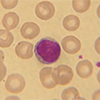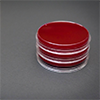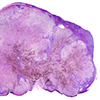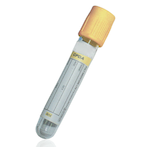
- Home
- Clinical Chemistry Tests
- Digoxin
Digoxin
Specimen Volume
1 ml bloodSample Preparation
Centrifuge specimen
Turnaround Time
1 daySample Processing In Laboratory
Usual
Sample Stability
Specimens are stable at 2-8ºC for 2 days. Store separated serum/plasma at -20ºC for longer periods (up to 6 months).
General Information
Digoxin is a digitalis glycoside drug used to treat heart failure and abnormal heart rhythms. This test measures the amount of digoxin in the blood. Heart failure, including congestive heart failure (CHF) causes the heart to become less effective at circulating blood. As a result, blood accumulates in the legs, hands, feet, lungs and liver, causing swelling, shortness of breath, and fatigue. Digoxin is used to reduce some symptoms of heart failure. It strengthens the contractions of the heart and helps it to pump blood more efficiently. Digoxin also helps control the heart rate and abnormal heart rhythms known as arrhythmias. It will not cure heart failure or arrhythmias, which are long term conditions, but can, along with diet, exercise, and other medicines, help to manage the symptoms. Digoxin levels need to be monitored because digoxin is a drug that has a narrow safety range. If the level in the blood is too low, symptoms may recur. If the level is too high, side effects may occur, such as: dizziness; blurred vision or seeing yellow or green halos; vomiting; diarrhoea; irregular heartbeat; difficulty breathing. Digoxin dosage may be adjusted based on the measured levels.
Patient Preparation
Sampling time: Ideally trough sample taken immediately before the next dose. Sample must be taken at least 6 hrs after an oral dose is given and 4-6 hours after an intravenous dose.
Resampling time: Within 24 hours of loading dose to confirm target concentration. After at least 1 week to assess maintenance dose.
Record the time of the last dose on the request form.
Notes
Digibind therapy for digoxin toxicity interferes in the measurement of digoxin. Electrolyte imbalance (decreased potassium and/or magnesium or raised calcium) can potentiate digoxin toxicity. Thyroid dysfunction may alter the clinical response. Toxic effects include nausea, vomiting, arrhythmias, visual disturbances, weakness and lethargy (noted > 2 micrograms/L).
Reference Range
Therapeutic Range: 0.8-2.0 ug/L
Specifications
-
EQA Status:
NEQAS
- EQAS Scheme: Yes
Link to Further Information
http://www.labtestsonline.org.uk/understanding/analytes/digoxin/tab/glanceCreation Date
Monday, 08 August 2011Modification Date
Monday, 02 July 2018General Information
Location of Laboratories
Copyright UHB Pathology 2018
Protection of Personal Information – Clinical Laboratory Services comply with the Trust Data Protection Policy and have procedures in place to allow the Directorate and it’s employees to comply with the Data Protection Act 1998 and associated best practice and guidance.
University Hospitals Birmingham medical laboratories at Queen Elizabeth Hospital, Heartlands Hospital, Good Hope Hospital and Solihull Hospital are UKAS (United Kingdom Accreditation Service) accredited to the ISO 15189:2012 standard. For a list of accredited tests and other information please visit the UKAS website using the following link: https://www.ukas.com/find-an-organisation/
- Molecular Pathology is a UKAS accredited medical laboratory No. 8759
- Biochemistry is a UKAS accredited medical laboratory No. 8910
- Haematology and Transfusion is a UKAS accredited medical laboratory No. 8784
- Clinical Microbiology is a UKAS accredited medical laboratory No. 8760
- Cellular Pathology is a UKAS accredited medical laboratory No. 10141
- Musculoskeletal laboratory is a UKAS accredited medical laboratory No. 9897
- Heartlands, Good Hope and Solihull Hospital pathology laboratories are a UKAS accredited medical laboratory No.8217.
Tests not appearing on the UKAS Schedule of Accreditation currently remain outside of our scope of accreditation. However, these tests have been validated to the same high standard as accredited tests and are performed by the same trained and competent staff.
For further test information, please visit the test database: http://qehbpathology.uk/test-database
For further information contact Louise Fallon, Quality Manager, 0121 371 5962
 Biochemistry
Biochemistry Haematology and Transfusion
Haematology and Transfusion Clinical Microbiology (Including Virology)
Clinical Microbiology (Including Virology) Cellular Pathology
Cellular Pathology General Information
General Information Molecular Pathology
Molecular Pathology